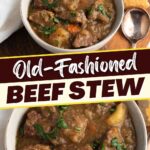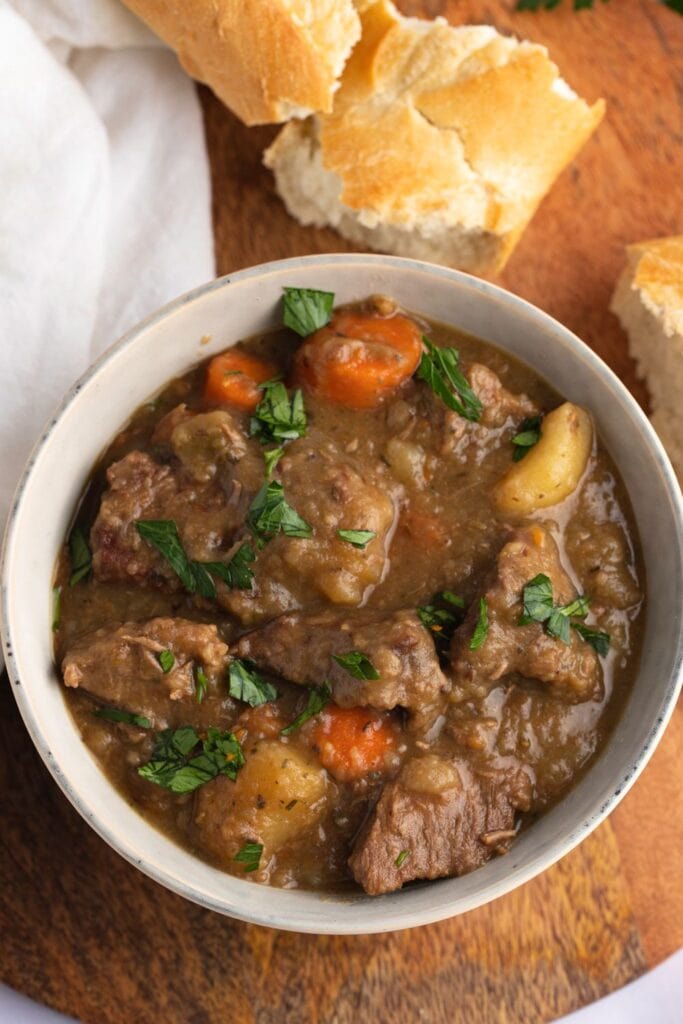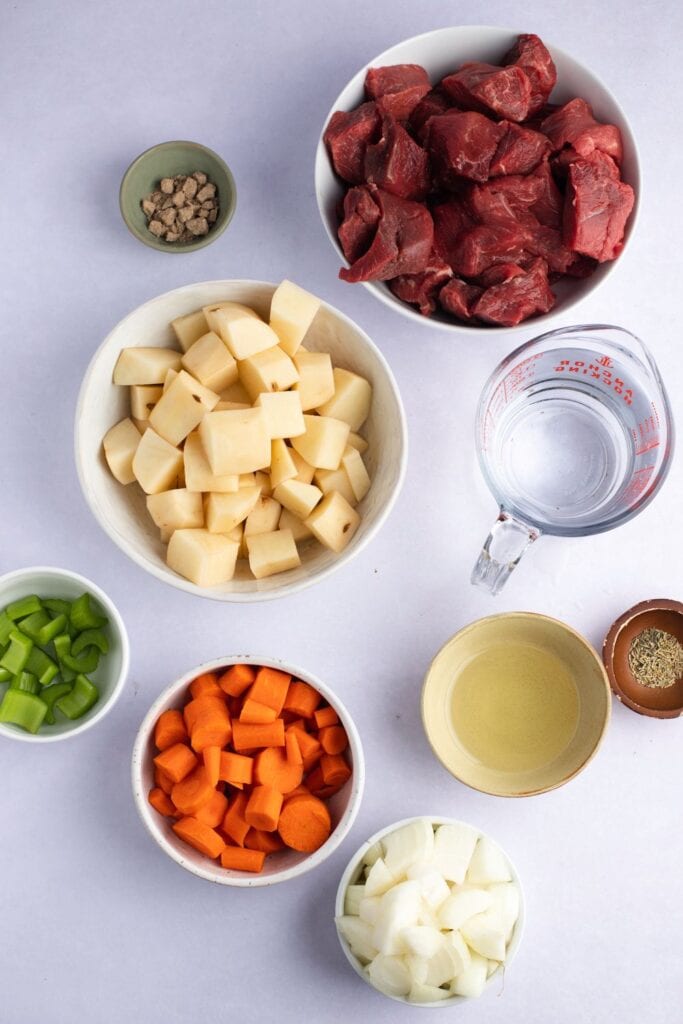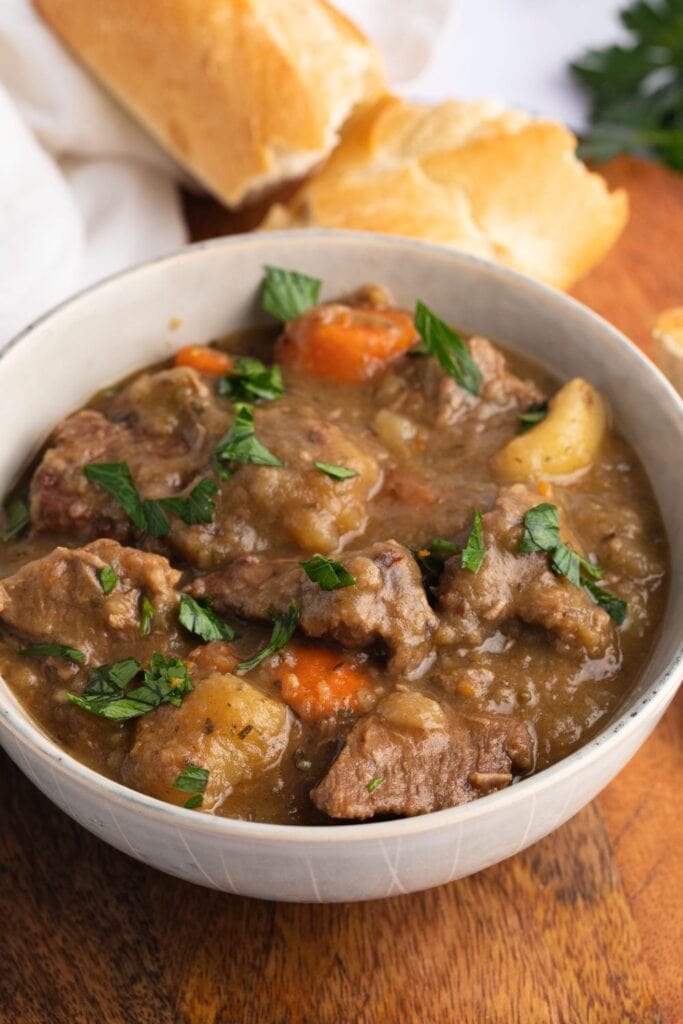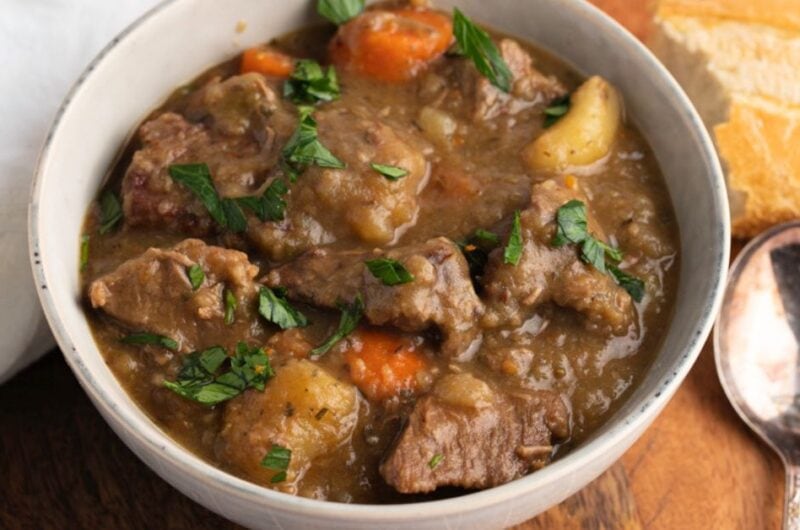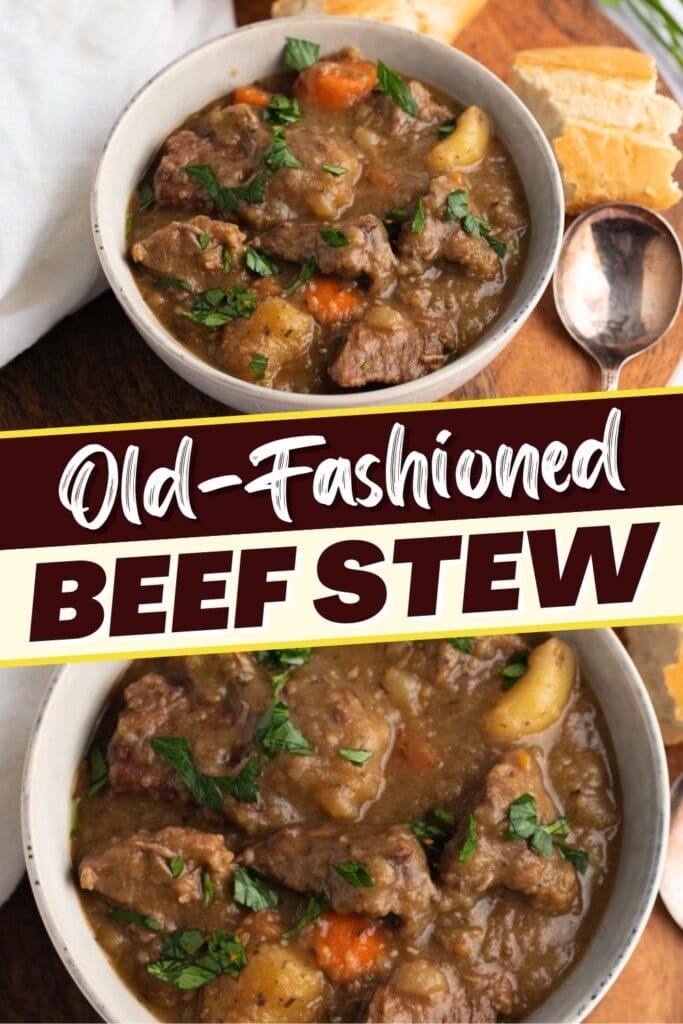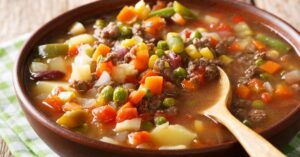Hearty, warm, and full of vegetables, it’s versatile and so easy to put together. The best part is that it’s a one-pot wonder. Instead of slaving over a bunch of pots and pans, you can have this cozy dinner cooking on the back burner in less than 20 minutes. So whether you’re looking for a quick weeknight dinner or something to warm you up after a long winter week, this old-fashioned beef stew is for you.
Old-Fashioned Beef Stew
The great thing about a dish like this is the use of everyday ingredients. Chances are you have carrots, celery, potatoes, and garlic ready to go. And your spice rack probably has parsley, rosemary, and black pepper. I recommend cooking your beef stew in a Dutch Oven. They can be a little on the expensive side but are so worth the investment. A Dutch oven will better distribute the heat, allowing for a more even braise on your meat. The fact that you can go straight from the range to the oven is the icing on the cake. Of course, you can use a regular, bottom-heavy pot for this. Just keep an eye on it and stir occasionally so nothing sticks on the bottom. Another great option is to use a slow-cooker. In this case, you can throw it all in the pot before work and come home to the perfect meal. This dish is so easy to make. Just braise your meat and simmer with the spices for an hour. Then add in your vegetables and thickener and leave for another hour. Once you’ve tasted the melt-in-your-mouth beef and thick and flavorful gravy, you’ll make this stew all the time.
Ingredients
One reason I love this recipe is that it’s easy to modify. Don’t have potatoes? Use pumpkin! Run out of parsley? Try a little thyme. That being said, it’s a classic for a reason. Beef Stew Meat. The best option for stew is “chuck.” This usually means meat from the shoulder of a cow. You can usually find chuck pre-cut in the store, which will save you time cutting and trimming. However, a good chuck roast would be an excellent option. A more budget-friendly option is to find a stew-meat package that is often a mix of different cuts. In some cases, this isn’t a good thing because some cuts can be tough. But when you’re slow cooking your meat like in this stew, most cuts will become tender and tasty. Vegetable Oil. When reaching for the oil, you ideally want to use something that has a high-smoke temperature. Since you’ll be browning the meat in your pot first, you don’t want something that could start to burn. Some alternatives include peanut oil, sesame oil, and avocado oil. Beef Bouillon. Bouillon is a concentrated stock that will round off your stew with all that hearty beef flavor. Although you’re using beef, vegetables, and seasoning, your stew might be lacking in flavor if you skip this. Seasonings. This recipe uses rosemary, parsley, and black pepper for a wonderful herby note in the gravy. The truth is, you can modify these to your preferred taste. Thyme and paprika make excellent additions, along with celery or fennel seeds. Vegetables. The most budget-friendly and classic veggie options have to be celery, carrot, onion, and potatoes. They’re the base of so many soups and stews for a reason: they just work. As I mentioned before, you are free to add and subtract depending on what you like and what you have. Any number of root vegetables would make great additions to this stew, and adding veggies can help to bulk it up, making it last longer. Corn Starch. Without this, you will have a robust and savory stew. It will just be more soup-like than a stew. Adding cornstarch into your gravy will ensure a wonderfully thick sauce to coat all those ingredients in each bite.
Tips for the Best Stew
As easy as this recipe is to make, there are a few things you can do to push it over the top:
Using chuck for this recipe is advised, due to the natural marbling and how tender it will become after slow cooking. Try combining the cornstarch with seasonings and tossing the meat in before browning. This will create an amazing crust on the outside that is bursting with flavor. When browning the meat, don’t overcrowd the pot. You may have to do it in batches, but having too much in at once will lead to a lot of liquid, which will prevent a good crust on the outside. Don’t clean your pot before adding the meat back in with the liquid. In fact, adding a touch of red wine will not only add flavor, but it will also help to loosen all that flavor from the bottom of the pan.For a real flavor kick, try roasting your vegetables before adding to the pot. A great option here is to toss everything in tomato paste and cook until tender. It will add a real depth of flavor to the stew. Always dilute the bouillon before adding into the pot to prevent lumps. You can adjust the thickness of the sauce by either adding some extra liquid or more corn starch toward the end of cooking. Using a dark beer in place of some of the liquid will give a deep and caramelized flavor that will pair perfectly with the beef. Using whole small potatoes will prevent them from becoming mushy and add extra flavor from the skin. Don’t cut your vegetables too small, or they will become too soft and lose their structure.
What Vegetables Go Well in Beef Stew?
This recipe is a fantastic and budget-friendly option. Using just potatoes, carrots, celery, and onion, you can make a big batch without having to spend too much. On the other hand, there are any number of great options if you want to try something new!
Onion and garlic are a base that shouldn’t be skipped, but maybe try shallots or Cipollini onions for something different. Root vegetables are another great way to bulk up the stew and add flavor. Anything from parsnips to squash will work well and not turn to mush after cooking. If you’re looking for something different, maybe try adding in a selection of mushrooms. They will provide a different texture and an earthy flavor to go with the hearty beef.Adding greens, such as spinach and kale, will not only give your stew some color but will boost the nutrients.
Can Beef Stew be Made Ahead of Time?
If you’re looking to save some time, there are things you can do to prepare for this dish.
Peel, cut, and chop your vegetables and store them in a Ziplock bag. You can even double the batch and freeze half for an even quicker prep next time.Be sure to store your onions and potatoes in the freezer to stop them from browning.If you purchased a roast, rather than pre-cut chuck, trim and portion it before storing in a Ziplock bag in the fridge.
If you’re using a slow-cooker, you can leave it cooking all day to be ready for dinner. But this stew is also great, if not better, when served the following day. Making this recipe ahead of time will allow the flavors to marry and will make it even tastier after a night or two in the fridge. Click on a star to rate it!
Average rating 4.7 / 5. Vote count: 55 No votes so far! Be the first to rate this post.
Share on social media: Let us improve this post!

